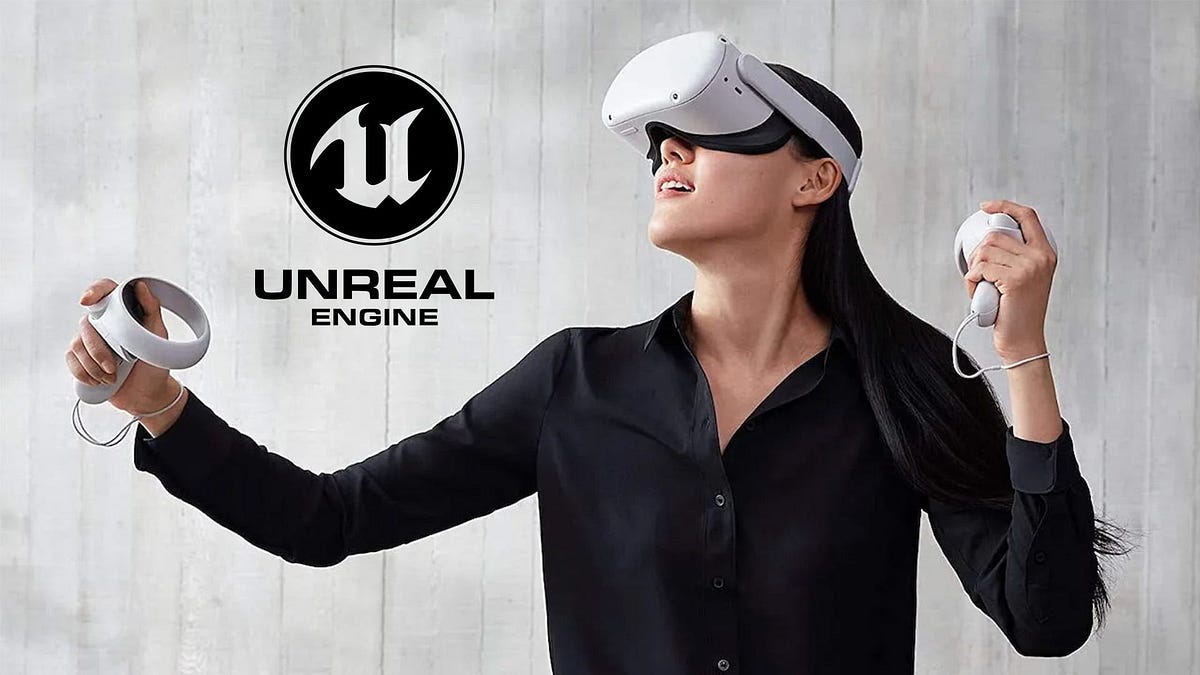Virtual reality (VR) has emerged as one of the most exciting and rapidly-evolving technologies in recent years. With its ability to transport users to entirely new and immersive virtual worlds, VR has the potential to revolutionize the way we interact with technology and each other.
According to a report by Grand View Research, the global virtual reality (VR) market size was valued at USD 10.5 million in 20 and is expected to expand at a compound annual growth rate (CAGR) of 18.2% from 20 to 2027.
Unreal Engine 5 was officially released in May 20, and it has already been used to create several high-profile VR games, including Phantom: Covert Ops and The Room VR: A Dark Matter.
Unreal Engine 5, the latest iteration of the popular game engine developed by Epic Games, has become a go-to choice for game developers looking to create visually stunning and immersive VR experiences. In this blog, we will explore how you can use Unreal Engine 5 for VR development.
Unreal Engine 5: The Key Features and Capabilities for VR Development
Unreal game development boasts of several advanced features and capabilities that make it an ideal choice for VR development. Some of these key features and capabilities include:
- Nanite: Virtualized Geometry: Unreal Engine 5’s Nanite technology enables developers to create highly detailed and realistic 3D models without sacrificing performance. With Nanite, developers can import film-quality assets directly into the engine and render them in real-time.
- Lumen: Global Illumination: Unreal Engine 5’s Lumen technology provides real-time global illumination, allowing developers to create more realistic lighting and reflections in their VR experiences.
- World Partition: Unreal Engine 5’s World Partition system enables developers to create massive open worlds that can be streamed in real-time, allowing for seamless VR gameplay experiences.
- MetaSounds: Unreal Engine 5’s MetaSounds system provides advanced audio processing capabilities, allowing developers to create more realistic and immersive soundscapes in their VR experiences.
- Blueprint Visual Scripting: Unreal Engine 5’s Blueprint system allows developers to create complex gameplay mechanics and systems without having to write a single line of code.
Getting Started with Unreal Engine 5 for VR Development
- Download and Install Unreal Engine 5: To get started with Unreal Engine 5 for VR development, you’ll first need to download and install the engine. You can download Unreal Engine 5 for free from the official Epic Games website.
- Familiarize Yourself with the Engine: Once you’ve installed Unreal Engine 5, take some time to familiarize yourself with the engine’s interface and tools. You can find extensive documentation and tutorials on the official Unreal Engine website.
- Choose Your VR Development Platform: Unreal Engine 5 supports a wide range of VR development platforms, including Oculus Rift, HTC Vive, and Valve Index. Choose the VR development platform that best suits your needs and preferences.
- Create Your First VR Project: Now that you’ve familiarized yourself with Unreal Engine 5 and have chosen your VR development platform, it’s time to create your first VR project. Start by creating a new Unreal Engine 5 project and selecting the ‘VR’ option in the project settings.
- Experiment and Iterate: As with any game development project, experimentation and iteration are key to success. Don’t be afraid to try out new ideas, features, and gameplay mechanics in your VR project.
Also read: unity-vs-unreal-engine
Closing Thoughts
Are you a game developer looking to create your next VR game? Consider exploring the capabilities of Unreal Engine 5 for VR development today! With its robust features, extensive documentation, and vibrant communities, Unreal Engine 5 provides a solid



